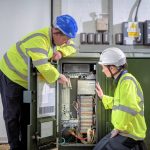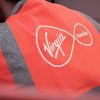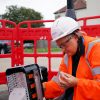North Yorkshire UK Questions Superfast Broadband Coverage Claims
The North Yorkshire County Council has pledged to launch an investigation into any cases where people struggle to achieve “superfast broadband” (24Mbps+) speeds, which is focused upon areas that have been upgraded by Openreach (BT) as part of the state aid supported Superfast North Yorkshire project.
According to the Northern Echo, a number of concerns have recently been raised after “broadband suppliers” (we assume they mean ISPs) told people living in areas where the new “superfast” network had been introduced that the minimum desired speeds (24Mbps+) remained unachievable.
At present the SFNY project is working to reach more than 94% of premises in the county with a “superfast broadband” capable network by June 2021 (currently at around 91%) and after that it could reach 97% (here). As part of that Openreach have been expanding the reach of their hybrid Fibre-to-the-Cabinet (FTTC / VDSL2) network and a little ultrafast “full fibre” FTTP.
Advertisement
Councillor Don Mackenzie said:
“Generally speaking, premises that are more than 1,200 metres from a cabinet will see download speeds drop off.
“If people want to know about the service that they can expect they should visit the Superfast North Yorkshire website. If people have ongoing concerns about speeds we will carry out an investigation for them.”
Unfortunately the article doesn’t offer any practical examples, which would have enabled us to probe deeper into the context and establish what is actually happening. Example cases are vitally important because otherwise understanding the ‘coverage vs expectations of performance’ issue can became a notoriously difficult minefield.
FTTC (VDSL2) technology tends to rely on a run of thin copper wire between homes and the local street cabinet, which sadly suffers from signal degradation over distance. Contrary to what Councillor Mackenzie says above, the speeds actually start to drop off from around 150-200 metres+ (at this distance you should get c.80Mbps but it steadily declines as the lines get longer, until falling below 24Mbps on the longest runs).
The official “superfast” coverage figures only factor in lines that are estimated to deliver 24Mbps+ speeds, although the raw network footprint will go much further. As a result this can sometimes create confusion were areas at the edge of coverage (longest / slowest lines) may see an upgrade take place, but won’t fully understand why they are then unable to achieve 24Mbps+ speeds (i.e. they still get an improvement but it’s sub-24Mbps).
Equally other factors may come into play to create further confusion. For example, issues such as slow home WiFi, poor home wiring, congestion on your home network and various other factors, which exist external to the new network (i.e. not within the operator’s control), often still end up being incorrectly blamed on the broadband line.
Advertisement
Suffice to say that getting to the bottom of such complaints can be very difficult and local authorities must share some of the blame here. Many councils have consistently failed to articulate the difference between “superfast” (24Mbps+) capable coverage and the overall “fibre” network coverage (including sub-24Mbps speeds).
Lest we forget that network faults, local interference and other infrastructure damage also have a role to play. Likewise consumer awareness is another factor, with some people often incorrectly assuming the upgrade to faster speeds is automatic.
Mark is a professional technology writer, IT consultant and computer engineer from Dorset (England), he also founded ISPreview in 1999 and enjoys analysing the latest telecoms and broadband developments. Find me on X (Twitter), Mastodon, Facebook, BlueSky, Threads.net and Linkedin.
« Swansea Named as Next UK Openreach FTTP Broadband Rollout City


















































Comments are closed